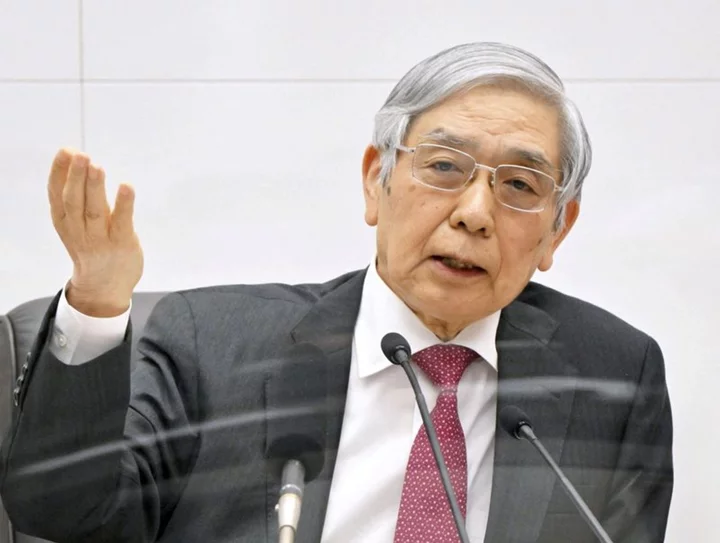By Leika Kihara
TOKYO Some Bank of Japan (BOJ) policymakers baulked at former chief Haruhiko Kuroda's idea of deploying a "bazooka" massive stimulus a decade ago, unconvinced central banks had the power to jolt public perceptions, accounts of the meeting released on Monday showed.
The 2013 deliberation underscores a challenge central banks around the world still face - the difficulty of communicating policy intentions effectively and convincing the public of the impact its monetary measures had on the economy.
The BOJ releases the full account of its policy-setting meetings after a decade.
Hand-picked by then premier Shinzo Abe to pull Japan out of deflation, Kuroda shocked markets by deploying in April 2013 a massive asset-buying programme and pledging to fire up inflation to its 2% target in roughly two years.
The decision marked a turnaround from the approach of his predecessor Masaaki Shirakawa, who was suspicious of the idea that central banks could shake the public out of a deflationary mindset with radical stimulus measures.
"My belief is that we need to deploy unprecedented monetary easing steps ... and communicate it in a simple way to overhaul market and public expectations," Kuroda said at the policy meeting on April 3-4, 2013, according to a full excerpt of the deliberations released on Monday.
Under intense criticism for doing too little, too late to end Japan's economic stagnation, many in the nine-member board agreed to what one BOJ staff described as a "shock-and-awe" approach.
"We must shift away from a piecemeal approach," then-deputy governor Hiroshi Nakaso said. "We need to radically overhaul market and public expectations with bold easing."
Not all in the board, however, were fully convinced. Former economist Takahide Kiuchi was wary of setting a two-year timeframe for hitting the price target, citing "very high uncertainty" of the chance of success, the minutes showed.
Another board member, Takehiro Sato, also voiced doubt over the idea the BOJ could control inflation expectations by adjusting the pace of money printing, the minutes showed.
"It's highly uncertain whether pumping money (in huge sums) could change public perceptions," Sato said. "It's worth trying and see if it works. But it's something close to a gamble."
Former banker Koji Ishida said he would propose reviewing the stimulus programme if no tangible results were seen one year into its launch, the minutes showed.
The stimulus, dubbed quantitative and qualitative easing (QQE), failed to fire up inflation to 2% and forced Kuroda to revert to a policy targeting interest rates in 2016.
Since then, the BOJ has capped long-term borrowing costs at about zero and has pledged to maintain ultra-low interest rates until its 2% inflation target is sustainably met and accompanied by wage growth.
After serving two, five-year terms, Kuroda stepped down from the top BOJ post in March.
(Reporting by Leika Kihara; Editing by Jamie Freed)

